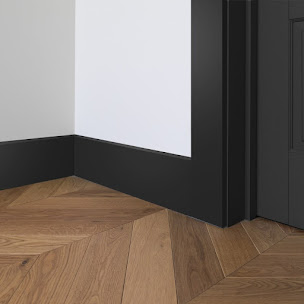Non-Slip Coatings on Rubber Stair Nosing Explained
One of the most ubiquitous places where accidents happen is on stairs, particularly in office buildings, public areas, and even residences. Slips and falls can lead to injuries as well as liability issues, hence need for stair safety solutions. Among best solutions to reduce the risk of such incidents is installation of stair nosing. Specifically, Rubber Stair Nosing with non-slip finishes provides maximum traction, durability, and safety.
In this article, we will discuss what non-slip coatings are, why they are important, and how they improve step nosing, anti slip stair nosing, and rubber stair nosing performance.
What is Stair Nosing?
Stair nosing is the protective strip placed at the edge of stair treads. Its function is to:
- Improve safety by avoiding slips and falls.
- Guard stair edges against wear and tear.
- Enhance visibility of stair edges for users.
There are various materials used to make stair nosing metal, wood, and rubber but rubber stair nosing is among the most sought-after options due to its slip resistance, flexibility, and affordability. When combined with non-slip coatings, its safety features are greatly enhanced.
Why Non-Slip Coatings Are Necessary
Non-slip coatings are surface finishes put on rubber stair nosing to enhance grip and traction. Though rubber itself has some natural resistance to slipping, the inclusion of a specialized coating provides added performance, particularly in applications where stairs will be subject to water, oil, or heavy foot traffic.
Major Advantages of Non-Slip Coatings:
- Improved Safety: Provides extra friction to avoid slipping in wet or dry conditions.
- Durability: Shields the stair nosing from premature wear, adding years to its lifespan.
- Versatility: Compatible with both indoor and outdoor settings, such as schools, hospitals, hotels, and offices.
- Compliance: Assists in achieving accessibility standards and regulations for building safety.
By adding step nosing to non-slip coatings, property owners produce a safer, longer-lasting staircase.
How Non-Slip Coatings Work
Non-slip finishes generally impart a textured finish to rubber stair nosing, preventing shoes from sliding. Such finishes may incorporate embedded grit, polyurethane-based finishes, or anti-slip rubber materials with high friction.
- Textured Surface: Offers traction even in wet conditions.
- Durable Layer: Guards the rubber stair nosing against scuffs and abrasions.
- Moisture Resistance: Keeps water from generating a slippery surface.
- Visibility Options: A few coatings are formulated in bold colors or reflective strips that make the stair edges stand out more.
When properly applied, non-slip coatings guarantee anti slip stair nosing operates effectively, even in harsh circumstances.
Uses of Rubber Stair Nosing with Non-Slip Coatings
Rubber Stair Nosing non-slip coatings are perfect for all types of environments.
- Commercial Buildings: Step nosing is commonly installed in offices and shopping malls to avoid workplace accidents.
- Educational Facilities: Colleges, universities, and schools need secure stairs for students and teachers.
- Hospitals and Care Centers: Improved grip minimizes fall hazards for elderly or physically disabled patients and clients.
- Hospitality: Hotels, resorts, and restaurants employ anti slip stair nosing for safety and regulation compliance.
- Outside Staircases: Non-slip paint is essential for rain-exposed, snow-exposed, or humid-stair environments.
In all these applications, rubber stair nosing with a non-slip coating offers consistent performance.
The Difference Between Rubber Stair Nosing and Anti Slip Stair Nosing
Although both these terms are used interchangeably, there is a subtle difference:
- Rubber Stair Nosing: Used to describe nosing strips that are constructed from pure rubber. Rubber inherently provides natural slip resistance and elasticity.
- Anti Slip Stair Nosing: Used to describe nosing to prevent slipping, which could incorporate non-slip coatings, textured finish, or incorporated grit.
When used together, non-slip coated stair nosing with rubber stair nosing becomes an effective safety solution that is anti slip stair nosing.
Installation and Care of Non-Slip Coated Stair Nosing
Step nosing with non-slip coating is easy to install. It is attached using adhesives, screws, or both, depending on the material used to make the staircase. Proper installation guarantees proper performance and safety for a long time.
Maintenance Tips:
- Regular Cleaning: Mild detergents and water should be used to clear away dirt and debris from the coating.
- Inspection: Periodically inspect for worn or peeling coatings, and replace as needed.
- Avoid Harsh Chemicals: Harsh solvents can harm the non-slip surface.
With minimal maintenance, rubber stair nosing can last for decades.
Aesthetic and Functional Advantages
Aside from safety, non-slip coatings also enhance the overall appearance of staircases. There are many coatings that come in contrasting colors, like yellow, white, or reflective stripes, making stair edges more visible and accessible.
For companies, it not only minimizes the risk of accidents but also provides a professional, well-maintained appearance to clients and visitors.
Why Non-Slip Coatings are a Smart Investment
Rubber Anti Slip Stair Nosing with non-slip finish is a cost-efficient method to provide safety and compliance. It minimizes the chances of accidents, reduces liability risk, and prolongs staircase life. In relation to the expenditures of medical claims, repair, or lawsuits, anti slip stair nosing installation is a marginal yet effective investment.
Conclusion
Anti slip coatings on rubber stair nosing provide a simple yet effective solution for ensuring staircases are safer in domestic, commercial, and public settings. Through increased traction, wear resistance, and visibility, such coatings upgrade plain step nosing to efficient anti slip stair nosing that addresses safety requirements throughout the year.
Both indoor and outdoor use, rubber stair nosing with non-slip coatings is an intelligent, cost-effective, and durable option for any homeowner who values safety and longevity.




Comments
Post a Comment